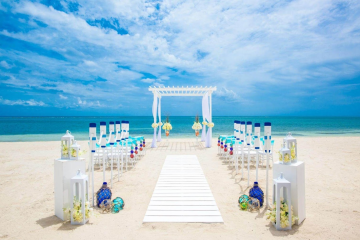Table of Contents
- Introduction: The Allure of Florence
- Renaissance Art: A Journey Back in Time
- Architectural Marvels: Bridging Past and Present
- Why Florence Continues to Inspire Artists Worldwide
- The Intersection of Art and History in Florence
- Florence Through the Eyes of a Traveler
- Tips for Art and Architecture Enthusiasts Visiting Florence
- Conclusion: The Lasting Legacy of Florence
Introduction: The Allure of Florence
Florence, a city often synonymous with art and history, provides a unique glimpse into a world steeped in culture and creativity. It is a place and an experience for those drawn to the charms of classic art and majestic architecture. Known as the birthplace of the Renaissance, Florence offers more than just scenic vistas—each street is a testament to its glorious past and creative spirit. The city invites explorers to delve into its soul through Florence city tours, which provide curated exposure to its artistic treasures and historic gems.
Sitting on the banks of the Arno River, Florence stands as a living museum where the past and present harmoniously blend. Whether you are roaming through cobblestone lanes or gazing up at grand facades, every corner of Florence whispers stories of visionary artists and trailblazing thinkers whose legacies shaped the world. As you wander, you feel the weight of history, yet there’s a refreshing energy as Florence stands as a beacon of inspiration for future generations.
Renaissance Art: A Journey Back in Time
Florence, known as the birthplace of the Renaissance, saw the emergence of an artistic revolution that had a far-reaching impact on Europe and changed history. This era marked a return to classical ideals that emphasized humanism, proportion, and perspective, vividly captured in the city’s renowned artworks. At the heart of this movement were figures like Michelangelo, whose statue of “David,” a symbol of youthful strength and beauty, has become emblematic of Renaissance art. Visitors flock to the Accademia Gallery to see this magnificent sculpture, marveling at its lifelike detail and imposing presence.
Yet, Michelangelo was but one star in Florence’s artistic constellation. Botticelli’s “Birth of Venus,” housed in the Uffizi Gallery, enchants with its mythological grace and beauty, reflecting a pivotal shift towards a secular artistic narrative. This transformation was greatly facilitated by the Medici family, whose patronage provided the resources and freedom for artists to innovate, leading to some of the most consequential advancements of the era. The legacy of Renaissance art is not merely a glimpse into the past but a bridge to understanding cultural transformations.
Architectural Marvels: Bridging Past and Present
Florence’s skyline blends historical awe with architectural genius, offering a visual narrative of the city’s evolution. Dominating this skyline is the Duomo, or Santa Maria del Fiore, a masterpiece designed by Filippo Brunelleschi. Its iconic dome, a feat of engineering and artistry, captures the essence of Florence’s architectural ingenuity, inspiring architects worldwide. The Duomo’s design reflects a harmonious blend of Gothic elements and burgeoning Renaissance ideals, offering a sense of continuity amidst change. Beyond this, the cityscape is dotted with other architectural treasures like the Ponte Vecchio, which serves as a crossing and a bustling marketplace, showcasing Florence’s ability to marry functionality with beauty. Additionally, the Palazzo Vecchio is a testament to the city’s political and cultural history, with its formidable structure symbolizing Florence’s enduring power and influence.
Why Florence Continues to Inspire Artists Worldwide
Florence’s influence extends far beyond its historical confines, touching artists and creatives worldwide with its enduring spirit. Today, the city continues to serve as a wellspring of inspiration, drawing artists to its fabled cobblestone streets and inviting them into its vibrant contemporary art community. This continual appeal is manifested in workshops, art schools, and collaborative projects that span traditional and modern techniques. Celebrations like the Florence Biennale highlight the city’s ongoing dedication to fostering artistic expression, providing a stage where modern artists can juxtapose their work against a backdrop of historical masterpieces. This dynamic interplay between past and present reinforces Florence’s role as a nexus for creativity, demonstrating how its cultural legacy lives on through the inspiration of today’s artists.
The Intersection of Art and History in Florence
Florence is a testament to the intricate tapestry woven by art and history, offering layers of stories embedded within its walls and streets. The city’s artistic achievements are deeply tied to its historical narrative, which serves as both a canvas and a chronicle for explorers and historians alike. As you wander through Florence, the city guides you through an open-air museum where every edifice and artwork narrates its past. Landmarks like the Basilica of Santa Croce, where notable figures such as Michelangelo and Galileo are buried, represent the connection between art and history. Florence’s dedication to preserving its cultural heritage allows visitors to immerse themselves in a rich educational journey, understanding how its historical events and artistic milestones are interwoven and continue to shape the cultural consciousness.
Florence Through the Eyes of a Traveler
For many travelers, Florence’s allure lies in its ability to transport them to another time while welcoming them with open arms. Visitors often find themselves lost in the city’s charms, exploring its many piazzas, frescoed chapels, and serene gardens. Each step through its historic center uncovers layers of artistic beauty, leaving travelers feeling emotionally bonded with the city. Personal stories, travel blogs, and firsthand accounts frequently capture the unforgettable experience of witnessing Florence’s vibrant ambiance. Whether it’s sipping coffee at a local café or gazing upon the intricate details of the frescoes in the Brancacci Chapel, these moments create lasting memories and a profound appreciation for Florence’s role as a cultural epicenter.
Tips for Art and Architecture Enthusiasts Visiting Florence
- Begin your adventure at the Uffizi Gallery, a highly respected art museum worldwide, to appreciate a wide array of Renaissance masterpieces.
- Make the Accademia Gallery a priority to encounter Michelangelo’s monumental “David,” an artwork that embodies the pinnacle of Renaissance sculpture.
- Stroll across the historic Ponte Vecchio, where you can enjoy shopping and a picturesque city view.
- The Pitti Palace and the grand Boboli Gardens provide a glimpse into the luxurious living of Florence’s former leaders amidst beautiful scenery and stunning artwork.
- Consider joining guided tours that delve deeper into Florence’s artistic and architectural heritage, enhancing your understanding and appreciation through expert insights.
Conclusion: The Lasting Legacy of Florence
As a city that has adeptly preserved its past while embracing the future, Florence remains a cornerstone of artistic and cultural exploration. Its art and architecture continue to enchant those who visit, a testament to human creativity and resiliency. Whether you choose to explore independently or through guided tours, Florence offers an endless well of inspiration and discovery. Florence’s enduring legacy invites every visitor to be part of its story. It challenges us to rethink art and history and how they shape our world, ensuring that every visit is more than just a journey—it’s a transformative experience.



